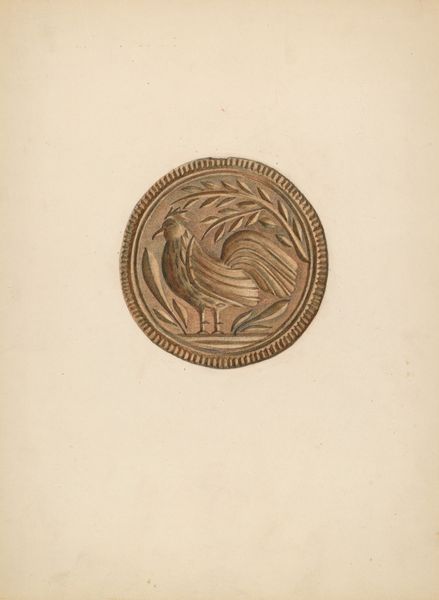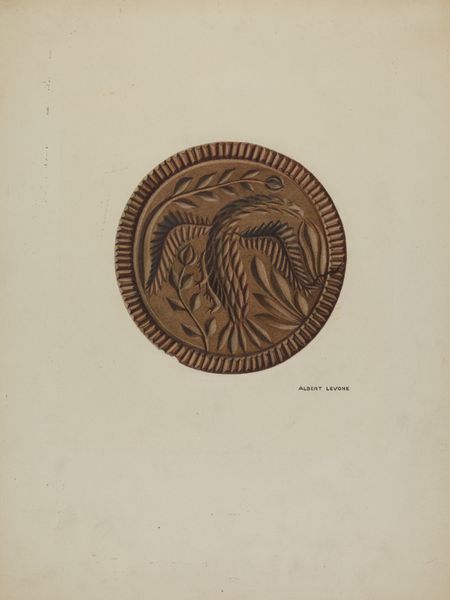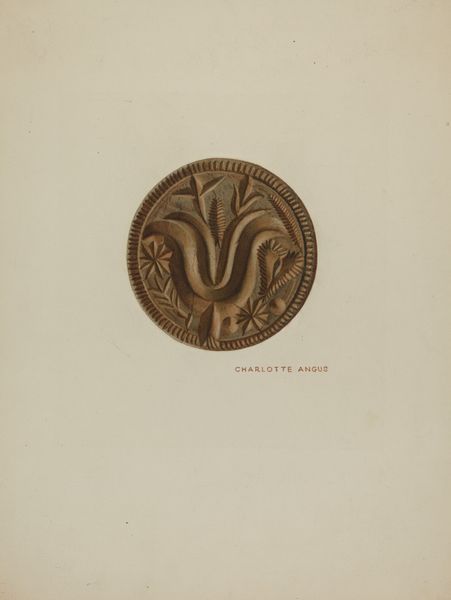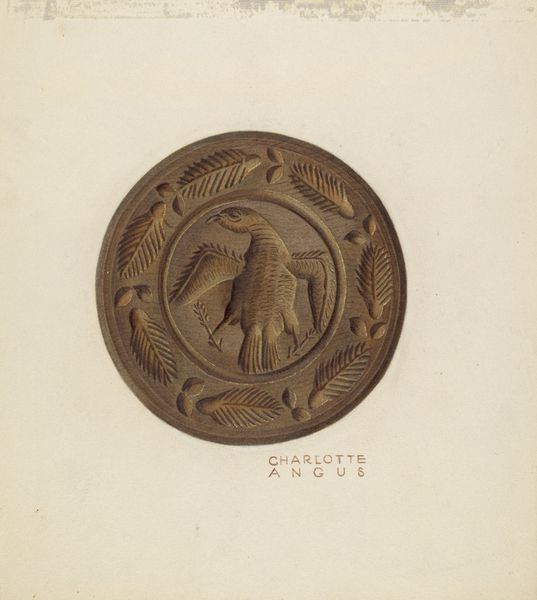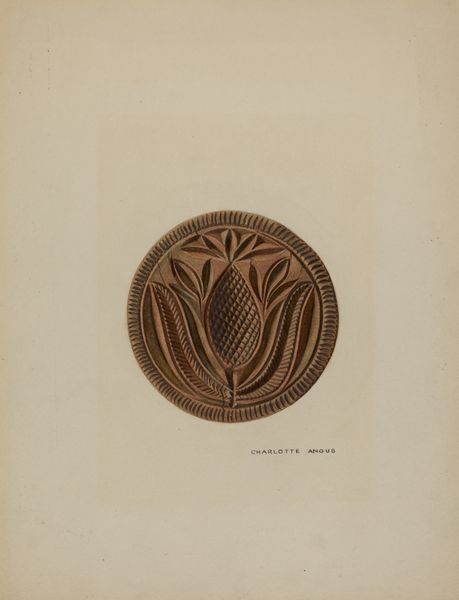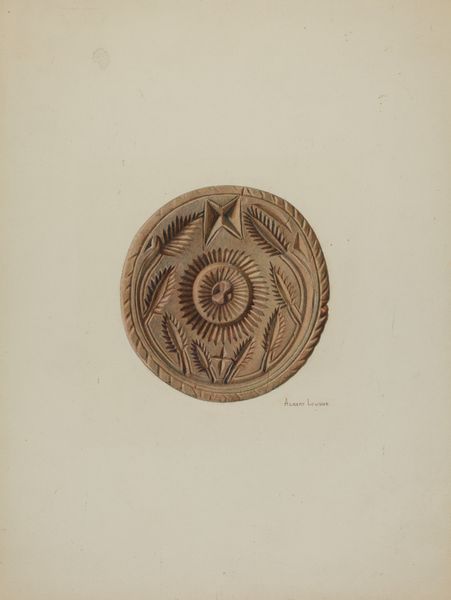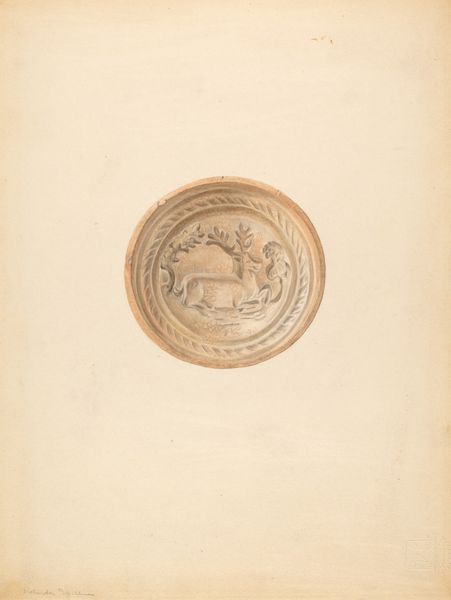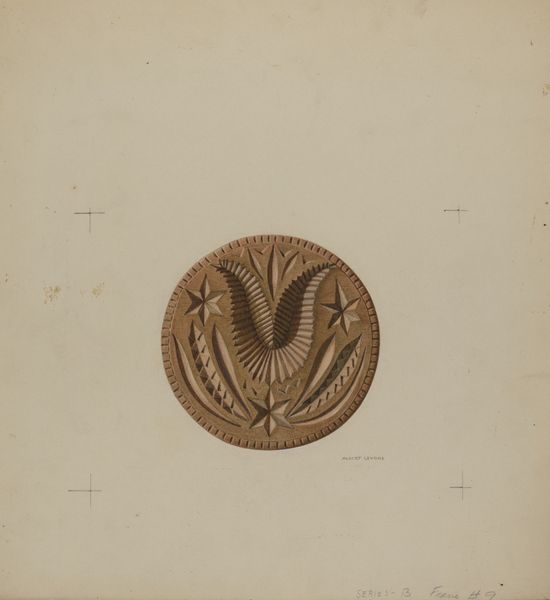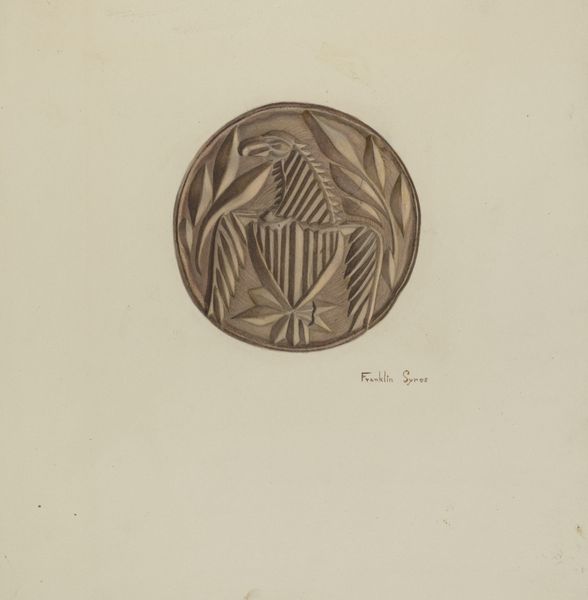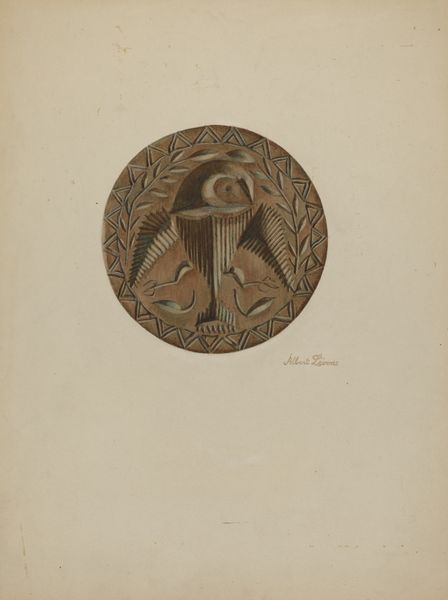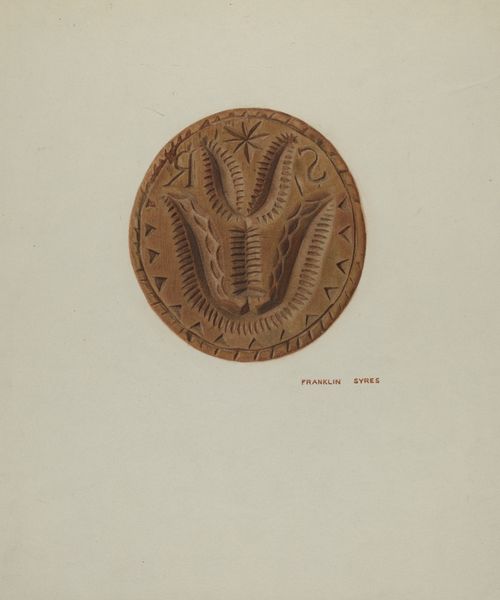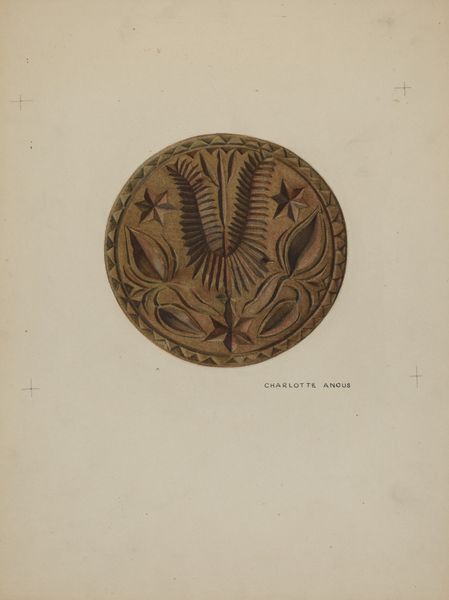
drawing, pencil, wood
#
drawing
#
water colours
#
folk-art
#
pencil
#
wood
#
watercolour illustration
#
watercolor
Dimensions: overall: 32.2 x 25 cm (12 11/16 x 9 13/16 in.) Original IAD Object: 4 1/8" high
Copyright: National Gallery of Art: CC0 1.0
Curator: Before us we have Albert Levone's study of a "Pa. German Butter Mold," dating from around 1938. It’s rendered with pencil and watercolor. What are your initial impressions? Editor: My first thought is “comforting.” The warm brown hues and the circular format evoke a sense of the domestic and perhaps childhood. Is there something revolutionary in the mundane? Curator: Absolutely. Folk art is, after all, art for the people, often embodying ancestral and local visual languages. Note the central motif: a stylized eagle. Eagles often serve as powerful symbols. Editor: Eagles are pervasive throughout colonial visuality and are deployed for very different ends. Here, the eagle feels softer, gentler than the kind weaponized for, say, imperialist nation-building. And the additional floral decorations, with their symmetrical patterning, seem to temper any association with aggression. Curator: Right. Consider how deeply rooted nature symbolism is in Pennsylvania German culture. Birds connect to the heavens and act as divine messengers, a thread woven through generations. It’s the Pennsylvania Dutch variation on the tree of life. It may seem quaint at first, but it acts as a cultural cornerstone. Editor: So, through a daily object, Levone's drawing allows us to touch the deeper symbolic roots of this community and hints at the resistance and continuity of culture despite marginalization? Curator: Exactly. Think of how the butter mold literally impresses the eagle image onto food, making every meal a reinforcement of cultural identity. This resonates even today! Editor: It makes me reconsider our relationship to everyday objects. There's power embedded in these tools that extend well beyond utility. What does it mean that Levone documented this as a drawing? Curator: Perhaps he recognized the beauty and significance embedded in the everyday. To preserve, archive, and share these artifacts connects to collective memory. Editor: So it preserves a legacy while also subtly underscoring the artistry of what is conventionally perceived as purely utilitarian. Curator: It is an assertion that folk art deserves careful appreciation and an important piece of cultural inheritance, even in modern times. Editor: A fascinating detail! The act of preserving becomes almost as politically significant as the preserved object itself. Thanks!
Comments
No comments
Be the first to comment and join the conversation on the ultimate creative platform.
